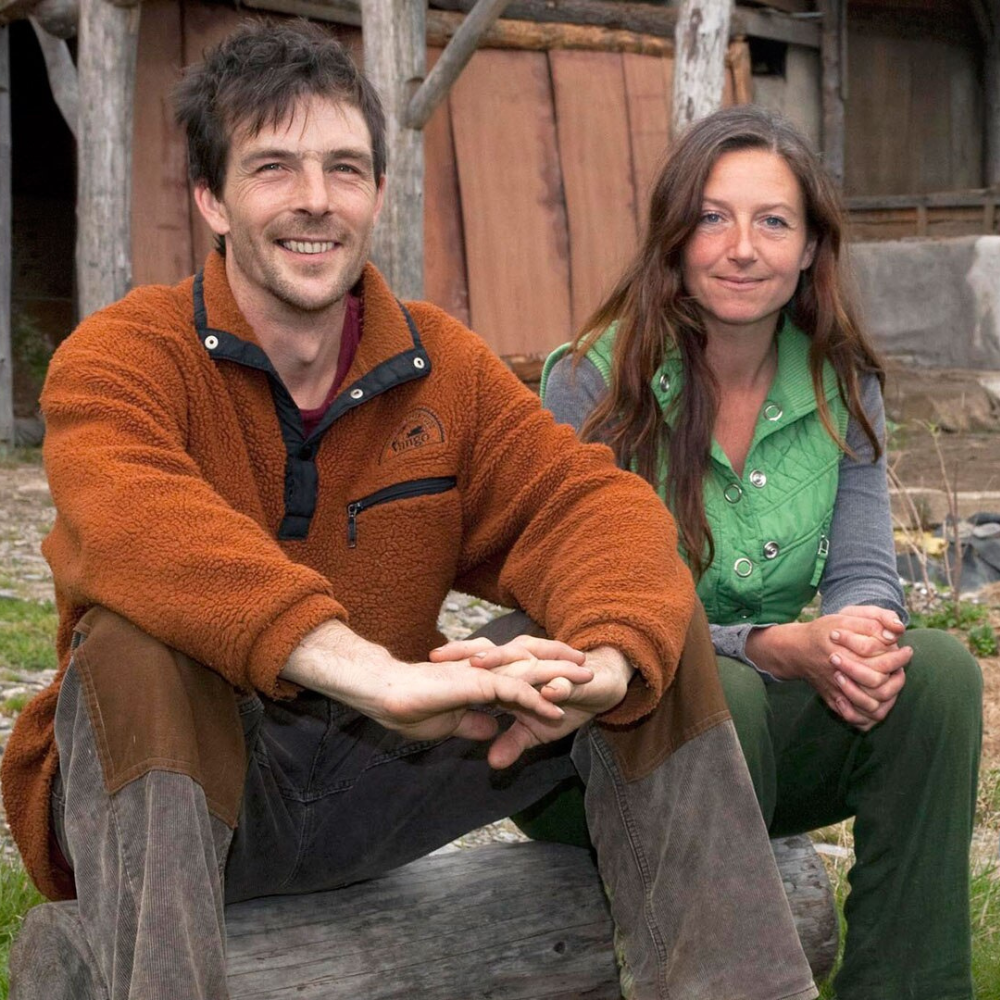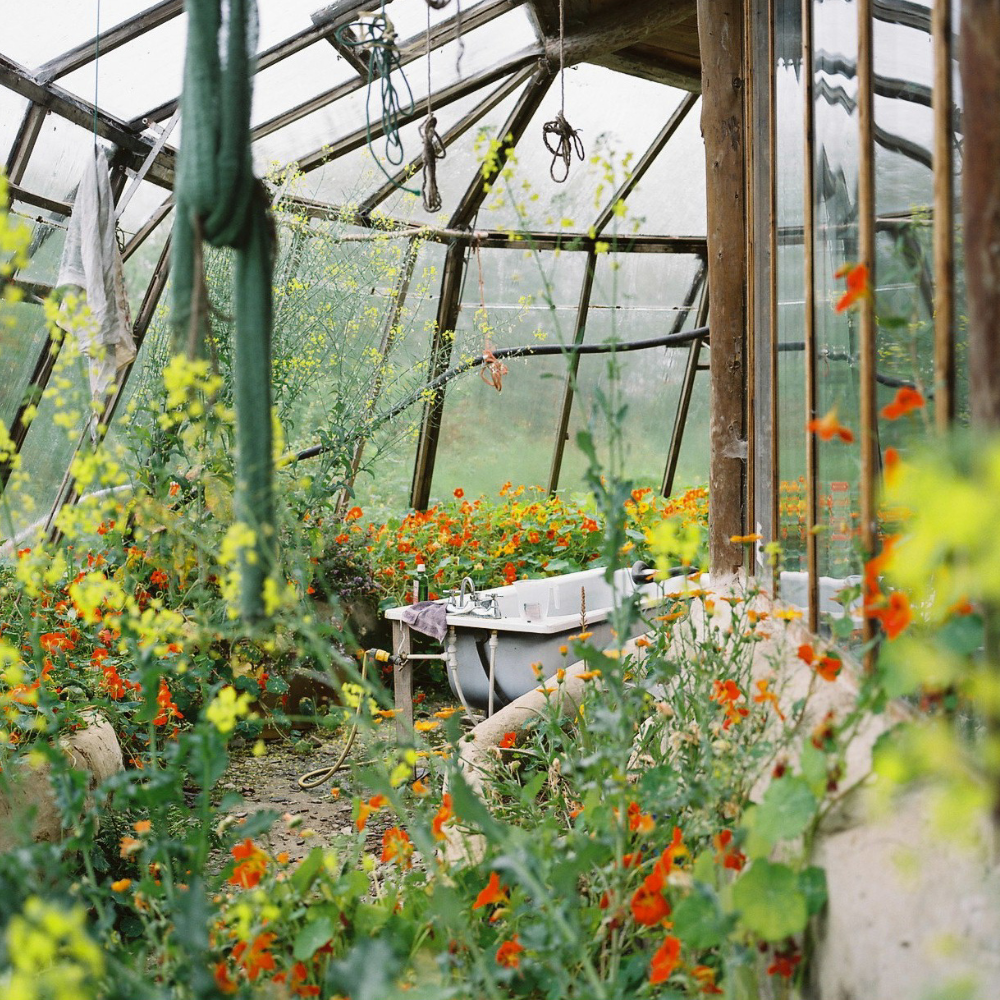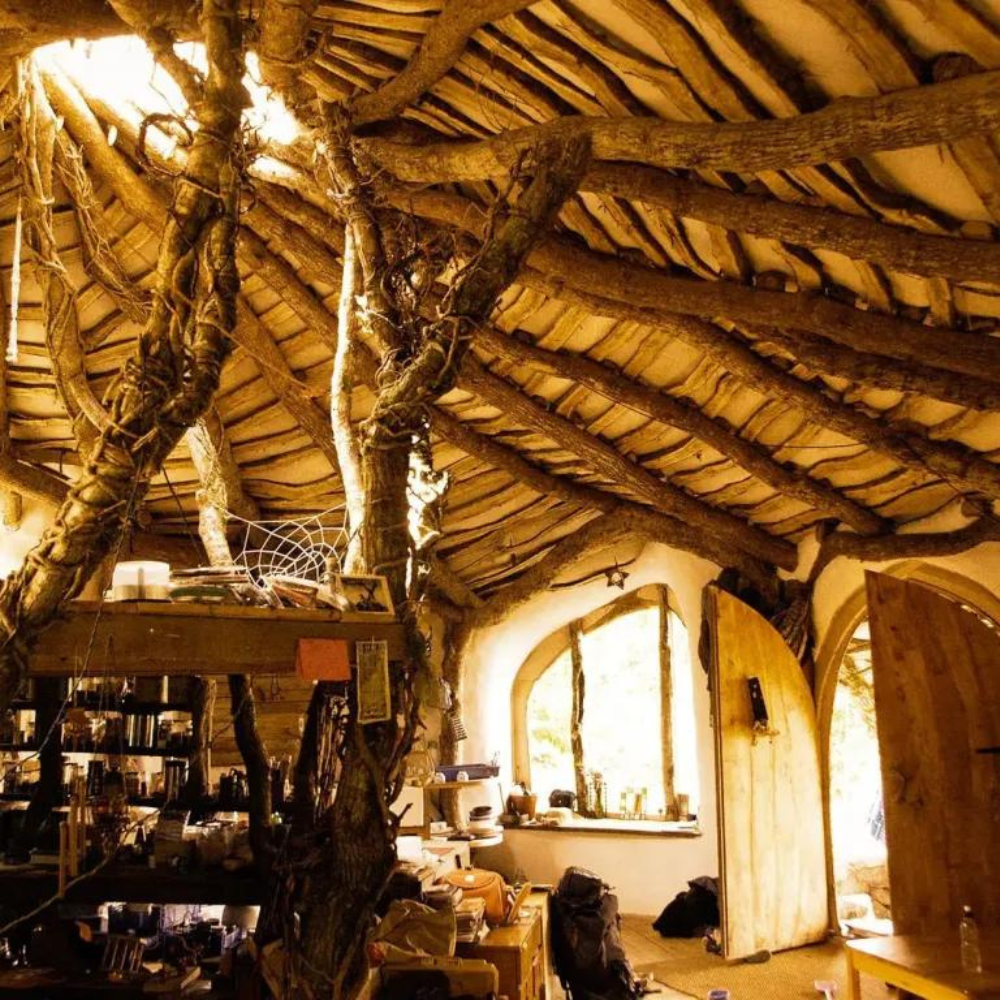The Idea
Simon Dale knew from the very beginning that he wanted to take up a project in the future one day. He even knew what the project would be — building his own house.

His reasons for this were plentiful, and he never wavered from his conviction of wanting to build his own house, even though he lacked the skill and training needed for such a construction project. Even though it was a long and strenuous journey, Simon was excited to start.
The Reasons
Simon’s dream to build a house had many reasons behind it. Simon’s reasons for creating somewhere to live by himself were rooted in the thought of making a place where he and his family could settle down one day and be proud.

It wasn’t all sentimental, though. Simon also knew that by creating his own house, he could save a ton of money and build something that was an extension of himself.
Land Acquired
So began Simon’s search for land to build his house on. As luck would have it, Simon stumbled onto the perfect patch of heaven – — nestled on a hillside in Wales.

The place was perfect for building his dream house. It offered a glorious view from the window as it was located on a high elevation, and, even better — was being given to him for free. However, there was a catch to this free deal!
The Condition
The landowners were ready to provide the place to Simon and his family for free, but they had something in mind regarding payment, only it wasn’t money. The landowner wanted Simon and his family to ensure their living on the land wouldn’t affect its purity.

So, to live on the land free of cost, all Simon had to do was promise to take care of it and its natural beauty! Simon didn’t hesitate for a minute and agreed to the conditions.
Jumping Into Action
With land in hand, and a vision in place, Simon got to planning. Simon wanted to design a house big enough for his family, which consisted of his wife Jasmine and their two kids. Simon’s vision consisted of something simple but fitting for his family of four.

The Dales weren’t looking for something over-the-top. Alongside building something just for them, their aim was also to ensure that their plans didn’t make them break their promise to the kind owners of the land.
Drawing Up the Plans
Simon quickly drew up a tentative plan of how he wanted the house to look, what he wanted to include, and the amenities he thought would fit them. Sadly, though, Simon’s enthusiasm didn’t translate into possession of skill.

Previously, Simon only worked on a building similar to what he had in mind, but that was the extent of his talents. It was his ambition, more than anything, that was driving him forward. However, he found help from an unlikely and more experienced relative.
FIL to the Rescue
Simon’s lack of experience may have hindered his vision, but rescue came from his father-in-law. The older man was a well-experienced builder, able to patch up the gaps in Simon’s knowledge.

Simon might have felt out of depth at first, but with a skilled ally and his supportive family behind him, he was soon raring to go. Plans in hand, the duo soon broke ground on the vision of the future house.
The Design
For the design, Simon followed some simple steps before finalizing it. Firstly, he and his father-in-law surveyed the hillside site, noting everything from the slope to the possible points of access.

Next, they made a list of all the materials that could withstand the weather conditions of their new home. They worked hard on visualizing it aesthetically. A lot of consideration went into making the design ready for implementation.
A Natural Path to Building
Adhering to the landowner’s condition that Simon takes care of the land and his own need to build as naturally as possible, Simon started foraging for natural ingredients and materials for the house.

For his dream Hobbit Home, Dale and his family sourced materials from nearby forests, dumpsters, from the ground — from any natural sources they could. Leaves, mud, stone — all that and all more went into the building. Simon aimed to bring to his home the ancient tradition of making houses with natural materials instead of the new practice of using industrial ingredients.
The Framework
Once Simon had gathered all the suitable materials for his construction, he got to work building a sturdy timber frame, which would act as the house’s skeleton.

The timber used for the framework showed off the natural curves and texture of the tree trunks, making a stunning visual and proving to be the first step in Dale’s vision for the Hobbit House. Once the beautiful structure was up, the visionary man turned his attention to the roof.
The Roof Over Their Heads
For the roof, Dale used multiple layers. Firstly, he covered the roof with straw to keep the home insulated and warm. Secondly, he covered the straw with plastic to keep the water from damaging it.

Lastly, he used some earth to help the house blend into its naturally earthy surroundings. Once the roof and the framework were in place, Dale tackled the walls using more straw, sticks, and dry stones, ensuring stability and endurance.
A Medley Coming Together
The roof, the wall, and the framework soon started coming together, giving a face to Simon’s dream of a Hobbit House. Simon, his team, and his family members felt overjoyed seeing their hard work pay off.

Soon, the floor was laid down, too. The pallets were the first layer to be put down for the floor, followed by straw and floorboards. With the floor in place, the house’s basic structure was ready.
A Family That Works Together
Despite the work being incredibly hard and, at times, challenging, the Dale family all pitched in to make their dream a reality. It was only as a team effort that everything truly happened. Simon’s father-in-law helped with the overall planning work and the building part.

His wife Jasmine kept the morale high and assisted in collecting the materials required for the construction. Even the young children pitched in when they could. However, building a house also meant many troubles in their lives.
The Sacrifices
The back-breaking work might have been for something good, but building a house meant that the family had to find temporary accommodation for the time being. The Dales lived without proper amenities, like electricity, for months when the Hobbit House was being made.

The adjustment was difficult for the family, especially after years of living in a modern house. The shock of having to do without amenities was hard, but the family made it through, and the result was worth it.
The Rain Before the Sun
More than just the accommodations proved difficult while the construction took place. Given that the location for the Hobbit House was Wales, the rains were a frequent companion on their journey.

Over the four months it took to build the house, the working hours amounted to 1000-1500. Often, the rain dampened not only Simon’s clothes but also his dreams. But the family slogged on through rain and sunshine, and soon their efforts yielded their dreams.
The Hobbit House
The months of sacrifices paid off, and soon, at the end of the journey, a beautiful Hobbit House stood ready to welcome the Dales. The house was a study of beauty in architecture, design, and technique.

Within just four months, the Dales had brought to life a beautiful, habitable, almost magical house on a hillside in Wales. The best part? They did it all under $5000, an astonishingly limited sum for a home!
The Costs
Simon’s dream house took less money and even less time to build — all thanks to their tireless dedication. Within just a $5000 budget, the family of four had a beautiful home to live in.

That amount would have barely covered a deposit on a new house today if Simon had opted to buy, even without getting any work done. On top of that, the house also brought great personal satisfaction to the family and fulfilled a dream nobody could take away from Simon.
An Ode to Nature
Simon’s house was an ode to nature with all its amenities designed to keep from harming any of the lands around it. This was, of course, due to both the landowner’s wishes and Simon’s dreams.

Some of their ideas to make their house more nature-friendly were to make their very own fertilizer for their now lush garden and opt for solar panels for energy, amongst other things.
The Final Flourishes
The cozy house was an inviting abode that was a revolution in the field. The house moved beyond commercial houses and had many factors that set it apart and above them.

The breathable limestone walls, wood-burning stove for heat, the underground air for cooling the fridge, and the skylight — it all made up a perfect house for the Dale family, who loved nature and enjoyed a simpler and wholesome life as opposed to a commercial one.
A Backyard Garden
As a family whose whole purpose is to be as nature-friendly as possible, growing their food was the natural next step. The Dales converted their backyard into a mini garden where they grow their food.

Not only does this help them save money as opposed to buying it from the grocery store, but vegetable gardening is also a great bonding activity for a family of four. They enjoy hearty meals made of self-grown ingredients and an unparalleled sense of joy every day.
A Dream Come True
For Simon, building Hobbit House was a dream long coming, and ensuring it was naturally safe was his priority. Both Simon and Jasmine faced difficulties, but whenever they wavered in their conviction, they turned to reading and self-belief to keep them going.

The result was one they were incredibly proud of. The massive challenge of building the Hobbit House was worth it, and the family finally had a house they were proud to call home.
A Good Example
The house wasn’t just for the family but also for the world to see what could be done if one believes in a dream. It was a way to teach people that houses can be built keeping in mind the natural impact and a limited budget.

The Dales aimed to provide people with a blueprint of a new lifestyle based on minimalism and a desire to do right by the planet.
A Media Star
The low-impact and innovative designs of Hobbit House soon brought reporters to the Dales’ doors, and the family, especially Simon, became media stars in their own right. The world soon became well-versed in the genius of Hobbit House.

What Simon achieved with the limited time and money was impressive and groundbreaking during that time. The house soon became an international sensation, with people lauding Simon for using naturally sourced materials.
The Next Jump
For the Dales, the Hobbit House was the perfect place, but they wanted to take their vision and make it into something bigger. So they decided to recreate the Hobbit House on a grander scale in Wales.

The need for space was also a pressing issue for the family, as the kids were growing up and would need their own space. With this in mind, the foursome packed their bags and began the next chapter — building the Lammas Project.
The Lammas Project
Based in Glandwr, Wales, the Lamma Project was started in 2009 by the Dale couple; the eco-village, spread across a 76-acre land, was the first of its kind in the UK.

Housing nine households, the one-of-a-kind project drew people from afar and soon became the base template for future such models to follow. The Dales worked tirelessly for four years before finally moving into their new lodging in 2013. But the road to their unique journey was fraught with difficulties.
Running Low on Cash
No matter how little you want to spend, every project requires some dough. This was where Simon was coming up short for the Lamma Project.

Even though the Hobbit House helped Simon save some money, more was needed for his next venture. When he set out to build the eco-village, he only had $630 in his pockets. With the ethereal Hobbit House, Simon had proved he could work on less, but he still needed some help.
Making-Do With Help
Thankfully for Simon, his vision required some money, but more than that, it needed him to be resourceful and think out of the box. For materials, Simon once again relied on collecting most of what he could from the surrounding areas, as he had with his first project.

His second wave of help came as volunteers. More and more people heard about this new venture, and soon, he had people vying to give him a helping hand to make the project successful, effective, and efficient.
The Second Wave of Work
Just like they had the first time, the Dales were again without a roof over their head, but that didn’t stop them. This time around was easier for them to adapt as they had the experience to guide them.

With the need for a house looming over their heads, the Dales got to work on their new home— which they now planned out to be a three-bedroom house.
The New Plans
This time, the plan was to build something bigger and better, and Simon’s designs were made accordingly. Since they had more land to work on, Simon’s vision included the plans to build multiple properties in the area.

These included roundhouses, glasshouses, workshops, and households for other people to live in. With the new hands joining in, the project seemed all the more exciting, and the time to build was back.
The Undercroft
The Undercroft was the first building priority for the Dales once they moved into the area. The design for this building was inspired by their original Hobbit House and was made similarly.

The building has windows on the sides to allow the sun in, helping the couple grow various crops there. The beautiful house even has a bath for an ethereal experience of a soak under the stars.
The Workshop
The next project that Simon tackled was a workshop for himself. This place was designed to give Simon a place to work on his ideas and became a boom for his future creative endeavors.

The workshop was made keeping the need for space for more significant projects in mind, and so was installed with double doors. Over the years, it saw many of Simon’s ideas come to life and proved their need again and again.
The Glasshouses
A couple of years later, Simon’s next idea came to play — establishing glasshouses in the village. The construction took over nine months and was built keeping in mind the windy weather of Wales.

The sturdy and efficient building was built on a remote part of the land and could house plants without being affected by the hillside winds. Many innovative ideas were incorporated to make the glasshouses more efficient. This became one of the crowning achievements of his DIY projects.
The Feeling of Community
Since the entire point of the village was to live and grow together, every building was made keeping in mind its effectiveness in helping the inhabitants of the Lammas Project.

For example, the glasshouses have many crops and plants like grapevines and peach trees, which help not only feed the village but also fetch a pretty sum when sold. The people, especially the Dale family, are dedicated to living a more natural life.
The Main Residence
The Dales stayed in a building called the “Earthlea” on the land, which took them over six years to build and set them back almost $34,000. That amount might not be small, but it’s still not much compared to other houses.

The building gathered a lot of media attention, and in 2016, the home was featured on an episode of the documentary show Grand Designs. Simon’s new house soon became the talk of the architecture world and stood out amongst the others of its kind.
The Current Life
Despite the happy times and successes, the Dale family couldn’t escape the harsh truths of life and lost their house in a tragic fire in 2018. Even though their friends and families tried to help them, the Dales had to give up their home and start again.

Since then, the Dales have laid low and moved on somewhere else, but Simon’s work continues to inspire others to follow in his footsteps. And we’re sure the Dales will soon be back to surprise everybody with a new and innovative project.
You might think that building a new house will cost you a lot, but that isn’t always the case. For one person, Simon Dale, it wasn’t about the money but his ideas. Using natural materials and opting for a minimalistic living concept, Simon and his family built a beautiful home in Wales for under $5,000. Let’s take a look at this inspiring story of his.